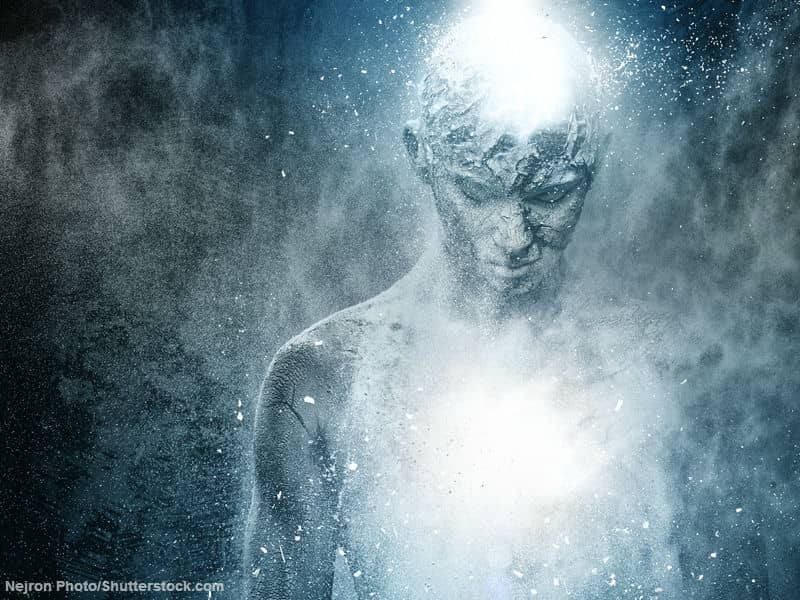ed. Bruce David Forbes and Jeffrey H. Mahan
University of California Press
324 pp.
Is a collection of essays like "Religion and Popular Culture in America" as good as its best contributions or as bad as its worst? Weeks from now, when a couple more books and at least as many "Friends" re-runs have intervened, will I remember from this volume William D. Romanowski"s sober assessment of Christian pop music, or Michael Jindra's wishful, ludicrous article, "It's about Faith in Our Future: 'Star Trek' Fandom as Cultural Religion"?
Anthologies resemble theatrical revues, or art salons: brilliant in places, amateurish in others, and ultimately important only if their parts amount to a fresh, intelligent whole. "Religion and Popular Culture in America" avoids the most obvious pitfalls of cultural-studies writing. Absent are the scholastic sentences with opaque syntax masking impoverished ideas. Mostly absent are the cutesy prefixes (exceptions are the odd "(re)productive" and "en-gendering"). The prose is content to say what it means. And so there are many reasons to (re)commend this book.
Mark Hulsether's argument, in "Like a Sermon: Popular Religion in Madonna Videos," that Madonna's music videos supports black and womanist liberation theology may jar Madonna-lovers and religionists alike. The videos, however, which I rented in a fit of nostalgia, bear him out: they develop themes remarkably consonant with the liberationist agenda, and in ways that even the most sensitive observers might miss.
In "The Oriental Monk in American Popular Culture," Jane Naomi Iwamura traces the history of the serene, mystical lama character in American film and television, alerting us to ways that romanticizing the East also unacceptably simplifies it. (I found some omissions curious: Why doesn't she cite Thomas Tweed's book on 19th-century Americans' fascination with Buddhism? How can she overlook the Wu-Tang Clan, which has brought Shaolin mysticism to millions of rap fans?
This collection would be more gold than dross if not for the section titled "Popular Culture as Religion," which comprises four essays that ask, at root, "How far can we push the definition of 'religion'?" Michael Jindra describes "Star Trek" fans as religious worshippers, and Michelle M. Lelwica writes about "Women, Weight Loss, and the Salvation Myth of Culture Lite." Joseph L. Price proposes that sports are an American religion, and David Chidester explains that baseball is a "church," and Coca-Cola, a religious "fetish."
These writers are not the first to notice that people can treat the seemingly profane in sacred ways. Long before Clifford Geertz proposed that any cultural system may be religious, James Frazer in 1890 placed magic, religion, and science on an evolutionary continuum, conceding the difficulty of demarcating the boundaries of strict religion.
That admission should not mean, however, that anything in culture-which of course includes everything-may be called religious. If that were the case, the word would come to mean nothing; semantic promiscuity would have robbed us of a useful analytic tool. When Chidester asks us to see the Coke bottle as a fetish, I suspect that he's being deliberately provocative. After all, nobody really expects a soft drink to yield "perfect harmony" except its advertising execs. Switching to Pepsi is not a conversion experience.
Such musing makes for intriguing thought experiments, not scholarship. Trekkies and extreme dieters present a more difficult case, for they do seem to believe that their particular activities-learning the Vulcan tongue, desperately seeking starvation-court utopia: "If only I were five pounds lighter." "If only the United Federation of Planets enforced the Prime Directive on Earth." But while it is certainly fruitful to note the religious aspects of such beliefs and their attendant practices, the authors' lack of a tragic or ironic sense allows them to push too far. In their noble attempts at scholarly sympathy, they lose clarity. Bulimics are not religious, they are sick, often desperately so. They need help, which is not something most of us would say about Jews, Pentecostals, or Muslims.
There is nothing more difficult than the study of the invisible, ephemeral, and mystical. Naming and defining religion is hard work, doomed to failure, and can provoke feelings of guilt, as if categories will straitjacket and inhibit the phenomena they describe. "Religion and Popular Culture in America" helps illuminate the gray areas. The authors often give wrong answers, but for those of us curious about religion, their outlandish questions are brave, and necessary.

